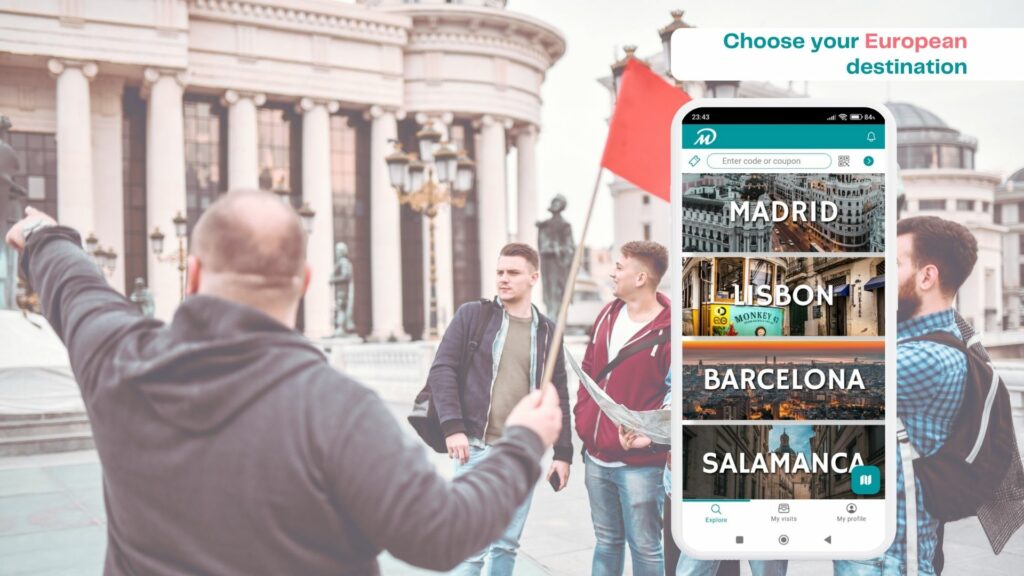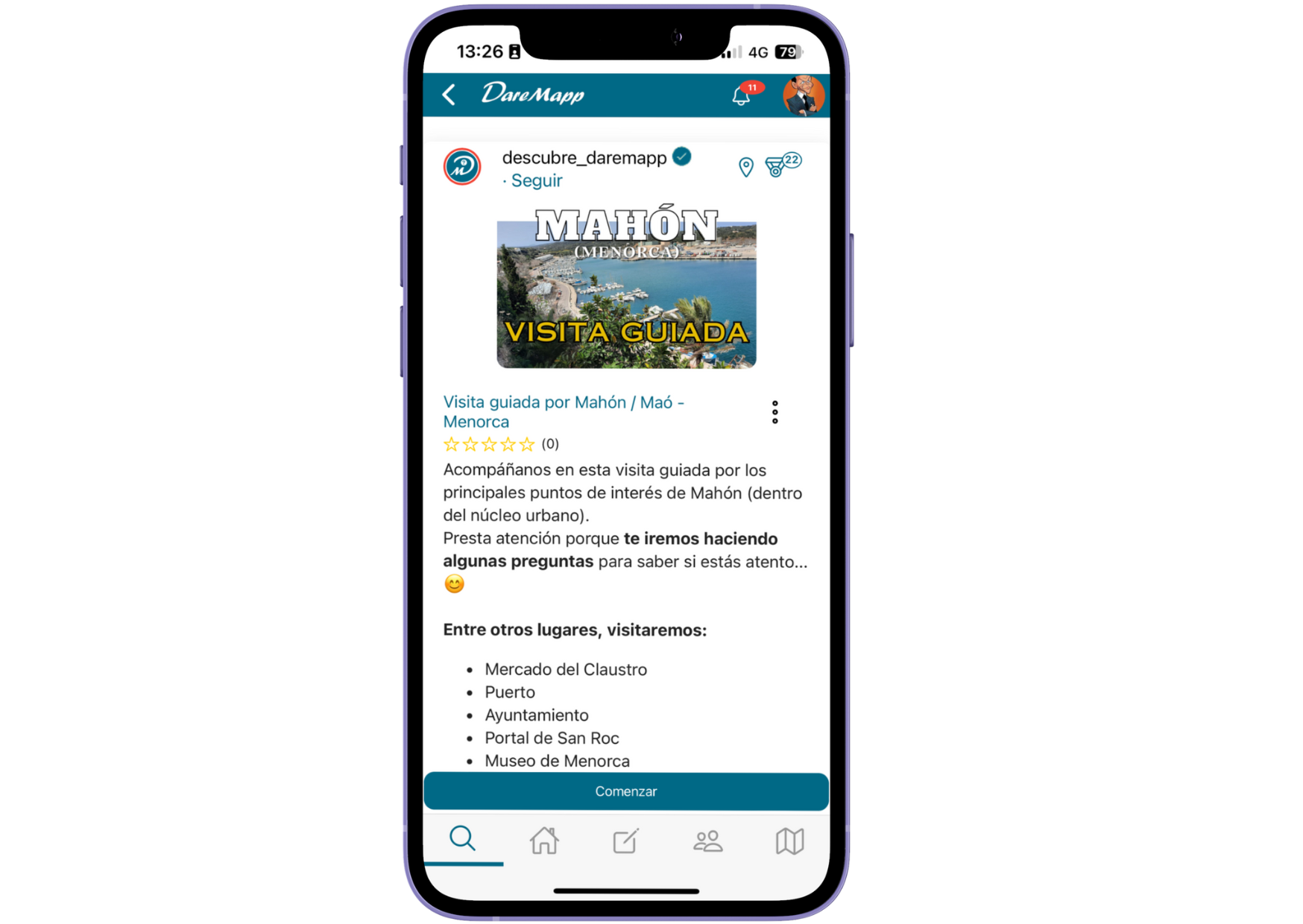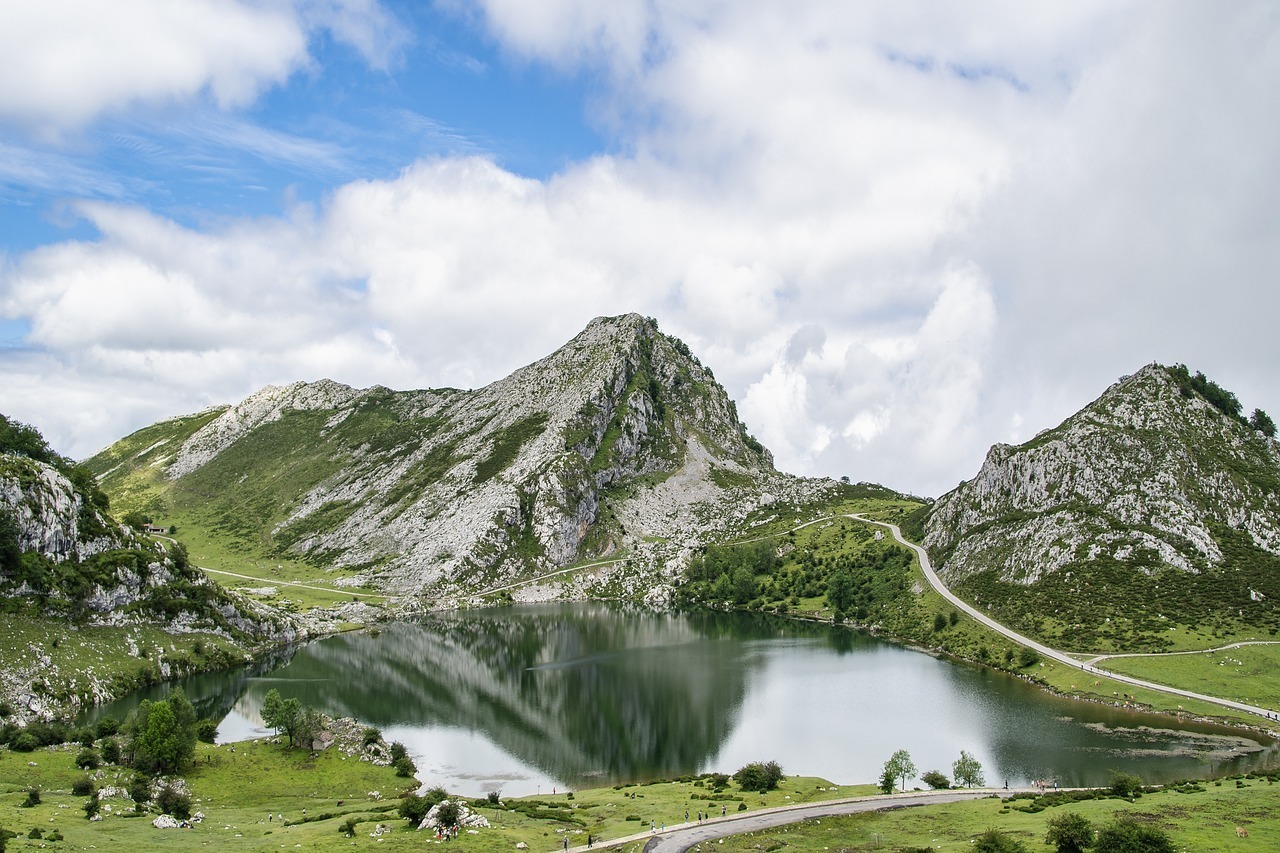Traditional guided tour or self-guided tour with your own mobile phone and at your own pace? We explain the differences so you can choose your favourite.

Evolution of tourism and self-guided tours.
The way we travel and engage in tourism has changed dramatically throughout history, driven by factors such as technology, economics, social policies and traveller preferences.
Tourism is expected to continue to evolve, adapting to social, technological and environmental changes. Sustainability, accessibility and inclusiveness will be key to more responsible and equitable tourism.
Technology, traveller preferences and social concerns have driven the evolution of the sector, creating new opportunities and challenges for the future. With a little planning and preparation, self-guided tourism can be a fantastic way to see the world.
⌛ Still scrolling through blogs… or would you rather explore cities on your own, with no schedules and everything on your phone?
With the DareMapp app, you get access to interactive self-guided tours, maps, fun facts, and local tips — all from your phone.
At your own pace, no need to rely on anyone.
What is a self-guided tour?
A self-guided tour is a tour where anyone with access to a mobile phone with an internet connection and a desire to have fun can enjoy a visit at any time of the day, autonomously and without the need to rely on a guide. The platform will guide you and show you the points of interest, how to get there and will propose a small validation challenge at each point.
In this way, you have the possibility of visiting in the order you prefer, at your own pace, in a more economical way, learning about legends and curiosities and all this in an interactive and entertaining way. All the content will be created by a local expert who will know everything you need to see on the self-guided tour.
Adopting self-guided tourism can be an enriching and exciting way to explore the world, giving travellers the freedom to create experiences that exactly match their interests and pace of travel.
It aims to make your holiday or sightseeing trip an unforgettable time without the hassle, worry or stress of having to find out what to see where.
What is a guided tour-freetour?
The guided tour or freetour is the most traditional and used nowadays. It consists of a route that is led by a guide, usually a local, through different parts of the city, explaining its history, legends and anecdotes. These routes are usually done in groups. The price is not usually fixed and at the end of the tour people usually contribute the tip they consider appropriate (on average around €12)
This often has a negative effect, as when you see the contributions of other tourists, you feel uncomfortable and obliged to contribute more than you would really like to give.
With the evolution of tourism in recent years, coupled with the pandemic and the rise of autonomy, this type of visit has lost some of its relevance.
🎧 Feeling curious? Now that you know what a free tour is, TRY A DIFFERENT WAY TO TRAVEL.
With the DareMapp app, you get self-guided, interactive tours with no schedules — available in over 40 cities.
Advantages of a self-guided tour.
If you are tired of looking for different options for visits, checking timetables, group availability, etc., we suggest the best option: the DareMapp app.
This mobile application offers you many options and advantages:
- The possibility of visiting any day of the week at any time, which is key if you arrive in a city late in the afternoon.
- Very affordable and accessible to anyone with a phone with an Internet connection
- Freedom to take a self-guided tour. You don’t have to depend on any guide or group to set the pace, you decide the speed and movements you want to do.
- Multiple games or fun tests that will make this visit much more fun and enjoyable. If you go with children, several of these challenges can be an attraction for them and a way to keep them more controlled and attentive.
- Many free tours are prepared and focused on the tastes or preferences of guides when it comes to directing the visit, however, with our self-guided tour, we mark and guide you through the most optimal route and the possibility of adapting or changing it to your preferences, allowing you to discover corners or secrets that you will not be able to discover in a predefined way.
- The self-guided tours offered by DareMapp do not require a previous reservation as other free tour companies usually ask for.
How to Organise a Self-Guided Tour: Your Step-by-Step Guide
1.Plan your Itinerary: Before you start, research the main points of interest at your destination. Use maps and online guides to create an itinerary that suits your interests. A self-guided tour allows you to customise your tour, so be sure to include the places you really want to explore.
2. Download a Guide App: Many cities offer self-guided tour apps that provide detailed information about tourist sites, along with interactive maps and audio guides. These apps can be a valuable tool to enrich your experience without the need for an in-person guide.
3. Prepare your resources: Gather all the necessary resources for your self-guided tour. Bring a guidebook, an external battery for your mobile device and a bottle of water. If you plan to visit museums or attractions, buy your tickets in advance to avoid long lines.
4. Set your Pace: One of the advantages of a self-guided tour is the freedom to adjust your pace. Decide how much time you want to spend at each site and whether you need to take breaks to eat or rest. This flexibility allows you to enjoy each site at your own pace.
5. Use Local Resources: Don’t hesitate to make use of local resources such as paper maps or information at tourist centres. Even if your self-guided tour is independent, these resources can offer useful tips and recommendations on what not to miss on your trip.
6. Stay Safe and Comfortable: During your self-guided tour, follow local rules and make sure you stay safe. Wear comfortable, weather-appropriate clothing and always keep your belongings safe. The autonomy of a self-guided tour also means being responsible for your own well-being.
By following these steps, you can enjoy a self-guided tour that is perfectly organised, tailored to your preferences and full of personal discoveries – get ready to explore and enjoy at your own pace!
📲 Ready to plan your self-guided visit?
Make it even easier with the DareMapp app: full routes, maps, audio, recommendations, and interactive content — all in one app.
✅ Explore our available tours and start discovering cities at your own pace.
Example of a self-guided tour with the DareMapp app
Here’s an overview of what a self-guided tour with the DareMapp app looks like.
1 You search and choose the city you want to visit.

2. Once started, the point of interest to visit is indicated. It indicates its geolocation and once you are there you will have access to all the information, stories and curiosities of that location.
3. Then we will propose you a challenge related to this monument, building, etc., which can be a question ❓(closed or open), a photograph 🤳📸 or any other fun test.
4. The whole route is created to be done autonomously and with the most optimal route, but you can do it in any order you want.
5. From the DareMapp app itself, you can buy tickets and admission to the main monuments and museums. What’s more, these tickets are usually skip-the-line tickets, so you don’t have to wait to get in. And in many cases, they’re cheaper than on the official websites. Incredible!
Tips for self-guided travellers
- Prior research: Before travelling, it is advisable to read up on local culture, social norms and laws to avoid misunderstandings or uncomfortable situations.
- Personal Safety: Keeping informed about areas to avoid and general safety precautions is crucial, especially in lesser-known destinations.
- Adequate Equipment: Depending on the destination, it may be necessary to bring specialised equipment, such as appropriate clothing for the weather, first aid kit, portable batteries for mobile devices, among others.
Now that you know the differences between self-guided and guided tours, we give you the opportunity to discover the self-guided tours offered by DareMapp. It also offers you a blog of all those cities in which it develops and complements information to learn more information and details of the city you are going to visit now or in the future.
Remember that with DareMapp you can make a multitude of interactive guided tours, including many of these “most famous routes in Spain”, a fun tourism for the main destinations.
what better way than travelling and discovering while learning in a fun way? Visit
Visit our social networks and find out what to see in each city, plus lots of tourism tips.





